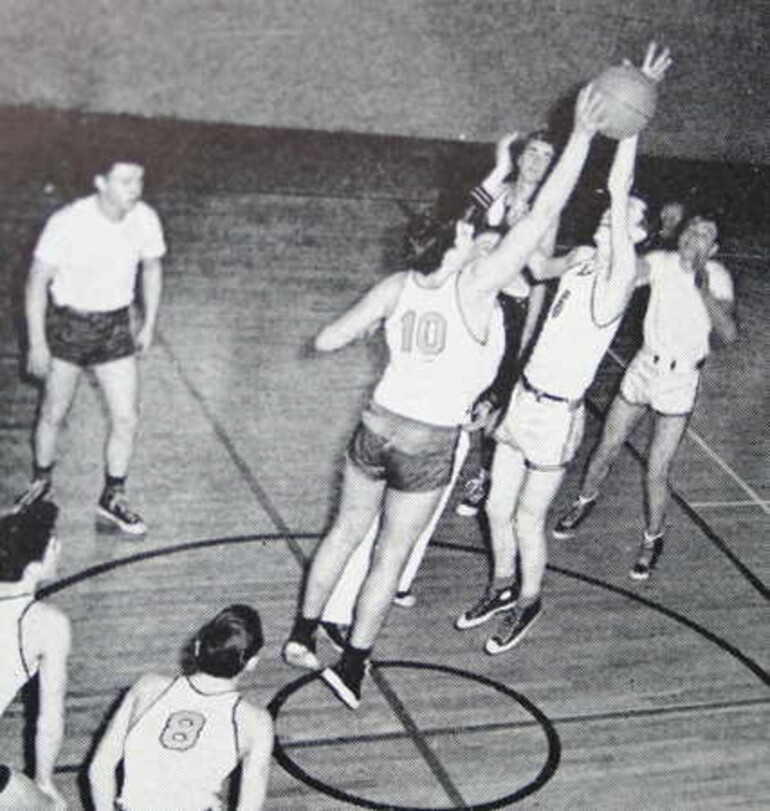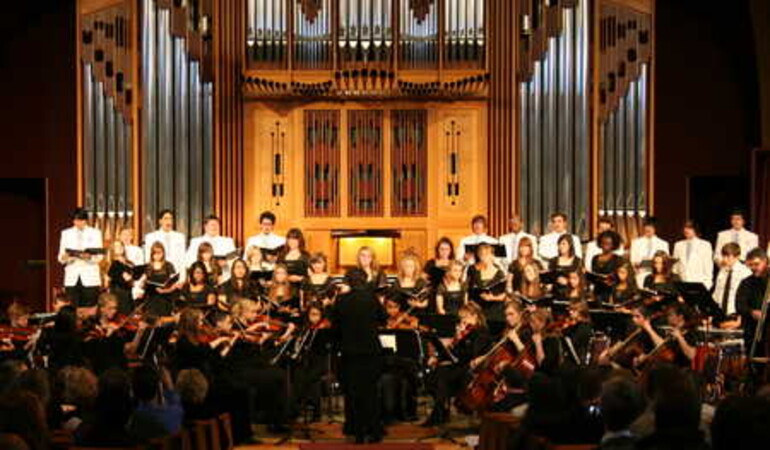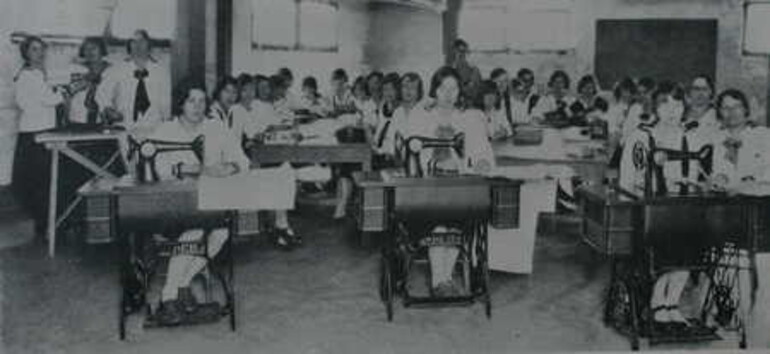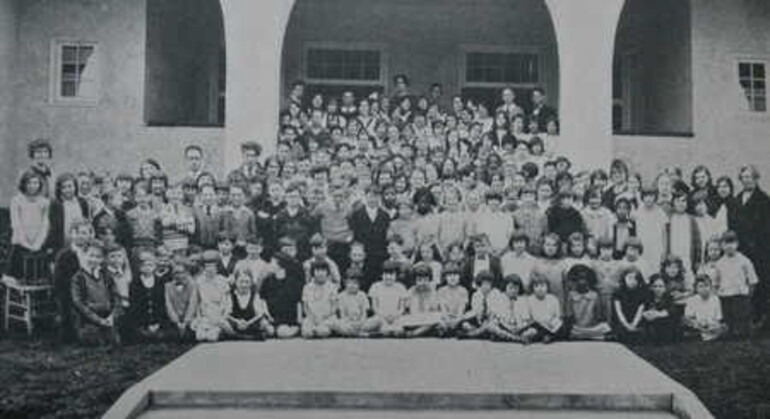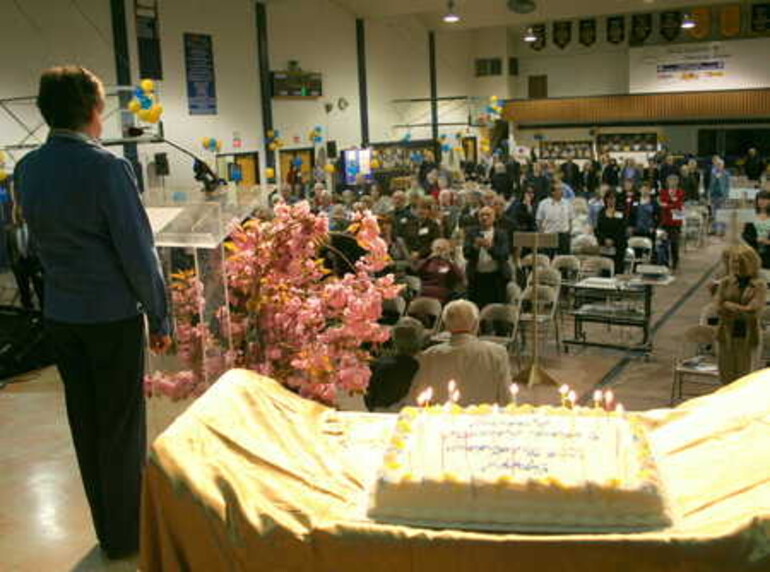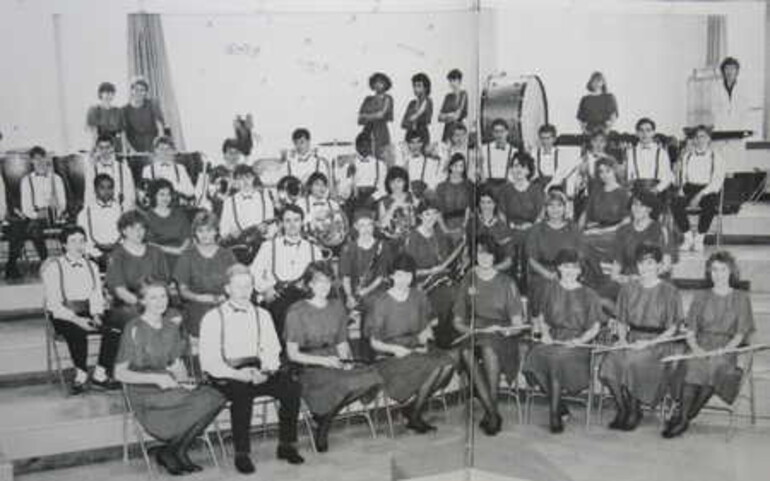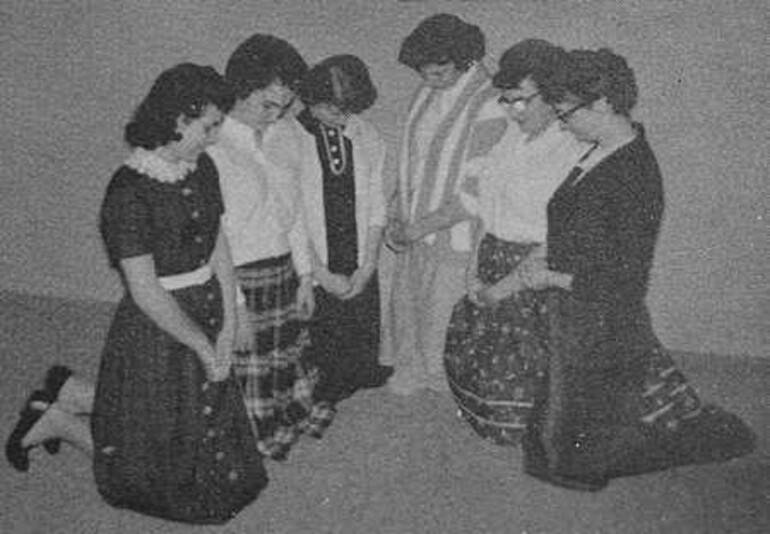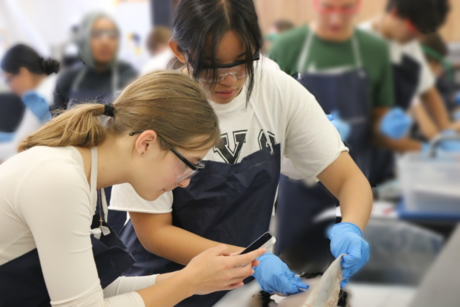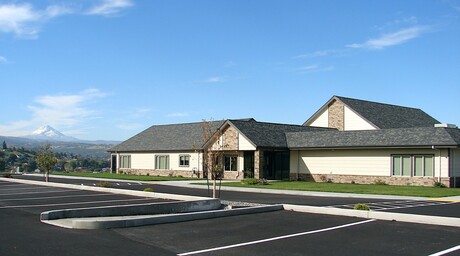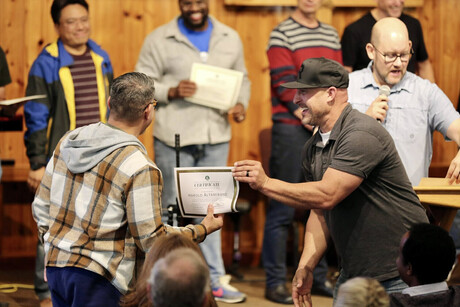This school year, Portland Adventist Academy in Portland, Ore., celebrated its 100th anniversary and a century long mission to lead young people to Christ.
History
Founded in the 1909–1910 school year, when students came to school by way of electric street cars, Doremus Union School opened its doors.
While little is known about the school's earliest years, Gleaner articles from the early 20s indicate that evangelism was an important reason for sending students to DUS. Students were encouraged to become Junior Missionary Volunteer Workers and were sought after by evangelists who taught them to minister to the people of Portland (Gleaner Oct. 8, 1925 p. 6). These activities continued decades later.
In the fall of 1929, DUS moved to a new building to accommodate its growth. Over 200 first through tenth graders were attending the newly named Portland Junior Academy that year and indications pointed to an even larger attendance in the coming year (The Trillium 1929). The school's first Student Association was formed, the first school news paper was printed and the very first annual, The Trillium, was published.
The Trillium reveals much about life as an Adventist youth. Students attended social banquets, had dress up days for school spirit, played sports and had the choice of an orchestra and choir. Domestic science and wood-working classes were introduced in the 1929–30 school year to help students with life skills necessary in this era. Girls wore a modest uniform which included a wool skirt with white middies and detachable blue collars and cuffs. Boys wore sport jackets, sweaters and ties.
In 1938 the school became a senior academy and changed its name to Portland Union Academy. That year students raised $800 towards the construction of a gymnasium. Roller skating, ice skating, skiing, football, baseball and basketball became popular (ReVista 1939).
Throughout the school's history, spirituality remained a core element. Just like students in the 21st century, students throughout the decades enjoyed weekly chapels, quarterly week of prayer events, ingathering, missionary volunteer activities, prayer bands and, eventually, mission trips and youth conferences.
In 1942 the elementary and secondary schools split and first through 8th grade later became known as Portland Adventist Elementary School.
In 1963 PUA moved to a rural community in East Portland and built a new facility, the school's current location and facility.
In 1975 the school became Portland Adventist Academy.
Present
Modern day PAA has come a long way. Smart boards and computers grace the classrooms. Top of the line microscopes give students a better learning opportunities. Impressive Mac and PC labs equip them with current skills that have replaced the sewing and wood working classes of the past.
Today, the American academic process is a vigorous and competitive one. PAA sends over 90 percent of students to college and many go on to graduate schools. They are not only becoming pastors, teachers, nurses and doctors, but are now venturing into modern careers of forensic science, environmental law, movie making and animation. This year, two juniors became semi-finalists for the National Merit Scholarship, the highest honor a student can receive. The English as a Second Language program is a growing success. Over 25 foreign students attend classes at PAA from, literally, all over the world. This year, PAA received the highest recommendation possible from its evaluation.
Athletics and music continue to be the favorite extra-curricular activities. In addition to choir and band, the school has added a steel drum band and an orchestra. One of the most popular classes is Guitar and Performance & Production where students learn professional recording skills.
Our athletic program has added soccer teams, golf, cross country and a rock climbing gym. PAA teams frequently win sportsmanship awards and our coaches are respected by league members. This year, Athletic Director Lance Judd, was chosen as Athletic Director of the Year for the entire state of Oregon. It's also notable that six different varsity teams went on to compete in statewide tournaments.
By far, the most important extra-curricular activity at PAA is service. Throughout the last decade mission trips have become so popular that PAA added an additional week to spring break to accommodate the large number of students missing classes. This year students traveled to Zambia, El Salvador, Peru and even downtown Portland for mission work. The annual Service Day gets every student and staff member into the community.
Spiritual life on campus is alive and well. At weekly chapels, a wide variety of student musicians lead worship, many aspiring leaders speak. A Chaplain and a team of students make up the campus ministries department. They actively plan and implement worship services.
The campus is no longer in a rural neighborhood. An interstate was built to the west, a hospital to the east, a mall to the north and a suburb to the south. Although most students come to school by car, many ride to school on the light-rail train, thanks to Portland's growing mass transit system.
But not everything has seen drastic change over time. If you were to pour through annuals and handbooks of the past, you'd find it to be true: "Church schools are for the purpose of training young people for Christians lives on this earth and also for eternal life in the new earth," (ReVista 1939) "Building Christian character is the chief function of our school," (ReVista School Purpose Statement 1942), "To train young people in Christian living for time and eternity," (ReVista 1951) and "PUA seeks to provide for SDA youth...the environment and tools essential for the successful launching of mature Christian character" (ReVista 1963 p.8).
Today's "Christ Centered Character Driven" is a reflection of a powerful history. The motto is not only printed on pens and publications, but it is written on the hearts of the students, staff, administration and the board of directors.
Future
What will the next 100 years hold for PAA? A new building is the first goal.
Planning for an ever changing world is crucial. As PAA's facility ages, plans for a new school, constructed on the same property, are making progress. So far, $3 million dollars have been donated for the first phase of the new school. Another $2 million is needed before ground breaking.
Everyone's prayer is for the soon return of Christ. "We exist to go out of business," stated Principal Crosby at PAA's centennial celebration. "When the small white cloud appears on the horizon, the world will be afraid and tremble, but we as Christians will realize that our time has finally come and we are going home.
One thing that is certain about PAA's future is that long-lasting theme that pervades history and is the emphasis in all visioning. "Our true reason for having a school based on being Christ centered and character driven," says Crosby, "is to make sure that we make reservations for the greatest reunion of all time."
Possible Side Column On American/Portland History During 1910:
Average Salary: $750 per year
Average Life-Span: 48 for men and 51 for female
Workforce: 31 percent was agriculture
Modern Inventions: The Electric Washing Machine
Entertainment: Soda Fountains
School Tuition for 9th & 10th grade: $8 per month
Transportation: Electric Street Cars
One hundred years ago, our growing nation was experiencing history making changes. The Progressive Era brought about prohibition laws which swept the nation one state at a time. The suffrage movement was gaining momentum and, in 1910, women in Washington state voted for the first time (two years later, Oregonian women joined them). Only one in three children were enrolled in elementary school and less than 10% graduated from high school so the first truancy laws were issued and enforced.
The Progressive Era's emphasis on education resonated with Seventh-day Adventists. Long before truancy laws, Adventists were sending their children to elementary and high schools. Many students, both young men and women, would even go on to attend Adventist colleges and medical and nursing schools.





